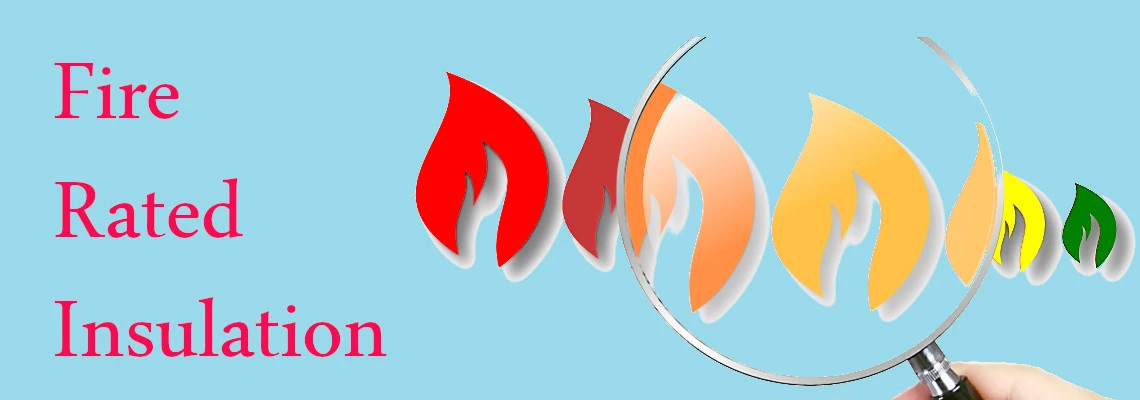
UK FIRE RATING CLASSIFICATION *
In general, thermal insulation is designed to reduce heat loss in a building. However, it's essential to recognize that only a select few insulation materials offer the added benefit of fire protection. Fire-resistant insulation, in contrast to standard insulation, possesses distinct qualities when confronted with a fire incident. It can either effectively inhibit the spread of flames, slow down their progression, or buy precious time for safe evacuation.
In this comprehensive article, we will explore the world of fire-rated insulation, answering key questions and providing valuable insights to aid you in making informed decisions for your construction or renovation projects. Additionally, we will delve into the specifics of the A1 classification and offer a helpful chart to facilitate a better understanding of fire-rated insulation classifications.
WHICH INSULATION IS FIRE RATED?
Nearly all insulation products are subjected to rigorous tests that are applicable in the UK. These tests require contractors to utilise specific fire-rated insulation products.
For insulation products to be utilised in a building, they are typically subjected to fire protection assessments following British Standard guidelines. These evaluations mainly revolve around two key standards: BS 476-1, which examines fire tests on building materials and structures, and BS EN 13501-1, which focuses on the fire classification of construction products and building elements.
The primary test that fire-rated insulation undergoes is BS EN 13501-1. This test determines the behaviour of fire-rated insulation in the event of a fire, assessing their:
Combustibility and Contribution to fire,
Smoke propagation, Emission
Droplets and particles in the first 10 minutes.
Upon the conclusion of these thorough assessments, the material is awarded an official fire rating classification, commonly referred to as a Euroclass rating.
EUROCLASS RATING
The Euroclass system, which outlines the fire performance of construction materials, was established in 2000. The European Union (EU) introduced this system with the aim of eliminating trade barriers among its member states.
Insulation materials are divided into three groups based on their fire-related characteristics.

COMBUSTIBILITY / CONTRIBUTION TO FIRE

The primary Euroclass rating, denoted by the letters A1, A2, B, C, D, E, or F, represents the insulation's overall performance. A1 is the highest level of performance, whereas F is the lowest.
Each rating comes with a specific classification, like 'Combustible,' 'Limited Combustibility,' or 'Non-Combustible.'
A1 – rated products are considered non-combustible
A2 – rated products are classified as having limited combustibility
B to F – rated as combustible, with ascending levels of combustibility.
When flooring materials are employed, they will be marked with 'fl,' for example A1fl.
In the case of linear pipe thermal insulation products, you'll find them marked with 'L,' as example A1L.

Pic 1.Fire rating classification A1-F
Insulation that falls within Class A1 or A2-s1,d0, which represents the highest level of fire safety, is referred to as "fire-rated insulation".
SMOKE PROPAGATION / EMISSION

Within the fire rating system, the 's' category pertains to the degree of smoke propagation or emission. It is graded on a scale from 1 (minimal/weak) to 3 (substantial).
Smoke emission classifications are excluded for products that have an overall rating of E or F.

Pic 1.Fire rating classification S
DROPLETS / PARTICLES

Last, the 'd' component in the rating system signifies the presence of 'flaming droplets and particles' during the initial 10 minutes of exposure.
It gets a rating of D0, D1, or D2, where D0 is the best, and D2 is the lowest.The classification is as follows:
d0: Indicates the absence of flaming droplets and particles.
d1: Signifies some presence of flaming droplets and particles.
d2: Represents a significant amount of flaming droplets and particles.
Please note, F-rated products do not fall into any of the mentioned classifications. On the other hand, A1-rated products do not receive either a smoke emission or flaming droplet classification, as they do not contribute to the spread of a fire.

Pic 1.Fire rating classification D
INSULATION MATERIALS BASED ON BS EN 13501*
| CLASS | DESCRIPTION | PRODUCT EXAMPLES |
|---|---|---|
| A1 | Non-combustible | Stone wool, Glass wool |
| A2 | Limited combustibility | Construction board |
| B | Combustable | Phenolic board |
| C | Combustable | PIR partial cavity board |
| D | Combustable | Phenolic cavity board |
| E | Combustable | Polystyrene |
| F | Combustable | Polystyrene |
Table 1. Insulation materials based on BS EN 13501
*Kindly be aware that the instances mentioned here do not encompass all possible insulation materials associated with each fire rating category. Numerous other insulation materials might exist for each classification. To guarantee that the selected insulation material aligns with the necessary fire rating and is suitable for its intended use, it is crucial to seek advice from manufacturers.
UNDERSTANDING CLASS 0 AND CLASS 1 FIRE RATINGS
In the United Kingdom, you will frequently encounter two supplementary fire ratings, namely Class 0 and Class 1. It's worth noting that these ratings are not explicitly outlined within the framework of BS EN 13501.
In the realm of building insulation, you might occasionally encounter products targeting Class 0 or Class 1 ratings. However, it's crucial to understand that these designations don't necessarily indicate the product's combustibility. Instead, they focus solely on the product's limited surface fire performance characteristics.
CLASS 0
Class 0 is a classification stipulated in Approved Document B of the Building Regulations 1991, founded on two distinct tests within British Standard BS 476. The first test examines how a surface contributes to the propagation of fire (BS 476-6), while the second evaluates the spread of flames across a surface, encompassing factors such as distance and duration (BS 476-7).
This signifies that the material has successfully met the requirements outlined in national standards, encompassing:
Controlled Flame Spread: The material effectively prevents the spread of flames across its surface.
Minimal Heat Emission: The material demonstrates low heat release properties during combustion.
Reduced Smoke Generation: The material minimises smoke production when subjected to combustion.
Class 0 is typically mandated for materials used in particular settings, including emergency exits, tall structures, and buildings subject to stringent fire safety protocols.
CLASS 1
On the other hand, Class 1 is a more restricted classification derived solely from the test outlined in BS 476-7. It's imperative to grasp the confined scope of these classifications and their relevance.
This classification denotes a surface with intermediate fire performance regarding flame spread. It affirms that the material has been subject to fire testing and complies with the stipulated criteria in national standards, which encompass:
Controlled Flame Spread: The material has a limited capacity for flame spread across its surface.
Moderate Heat Emission: The material exhibits moderate heat release characteristics during combustion.
Moderate Smoke Generation: The material produces an acceptable level of smoke when exposed to combustion.
Class 1 is typically stipulated for materials utilised in general building scenarios, where a lower degree of fire resistance is deemed sufficient based on the particular context and regulations in place.
EUROCLASS SYSTEM vs CLASS 0
The Euroclass system, introduced by the European Union in 2000, aimed to facilitate trade and standardise fire performance evaluations for building products across member states. Before its implementation, manufacturers had to navigate a maze of distinct national testing methods in various countries to assess fire performance.
For example, if a German company wished to market façade cladding panels in the UK and France, it had to undergo separate tests in each country to gain market approval. The Euroclass system aimed to alleviate this by providing a common classification system applicable throughout the EU. However, harmonising national regulations with the Euroclass system led to challenges.
In the UK, the Building Regulations on fire safety introduced a classification system for wall and ceiling linings to measure the surface spread of flames. It ranged from Class 4 (the worst) to Class 1 (the best, indicating the slowest flame spread). Class 0 represented a Class 1 level of flame spread and considered the limited heat release from a material's surface.
During the transition period when the Euroclass system was integrated, the UK continued to reference both the national standards and the European classification. This ongoing coexistence of systems creates issues because Class 0 in the UK doesn't align with the Euroclass system's performance criteria.
In the Euroclass system, non-combustible materials (A1 and A2) do not contribute to fires, while combustible materials (B to F) have a higher calorific value and can aid in the spread of flames. A1 and A2 classifications are granted based on successful non-combustibility tests, requiring very low calorific values. The Euroclass system follows a hierarchy of testing, with increasingly stringent criteria for each class. Classes D to B use the SBI testing method, with lower classifications (Euroclass C to F) indicating lower fire safety levels, with F signifying a failure to pass higher class tests.
When evaluating both the overall fire performance and insulation attributes, it's essential to take into account the mentioned standards BS EN 13501 in conjunction with the Class 0 and Class 1 ratings.
TYPES OF FIRE RATED INSULATION
A1 FIRE RATED INSULATION
When it comes to fire-rated insulation, non-combustible products are your top choice. A product earns the non-combustible designation when it achieves a Euroclass A1 rating according to BS EN 13501-1.
Non-combustible insulation materials encompass a variety of options, such as fibreglass (glass wool) insulation roll, stone wool (rock wool) insulation slab or calcium silicate boards. In this group, you'll discover various non-combustible insulation options to match different requirements.
Below you will find some examples of non-combustible insulation materials with A1 ratings:
A1 RATED INSULATION
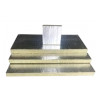 SLABS
SLABS
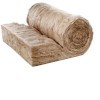 ROLLS
ROLLS
Knauf Earthwool Loft Insulation Roll
URSA 10 Diverso Loft Insulation Roll
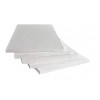 BOARDS
BOARDS
Promat Supalux Fire Protection Board A1
Promat PROMATECT L500 Calcium Silicate Fire Insulation Board
Promat Promafour Non-combustible Board
DOES INSULATION NEED TO BE FIRE RATED?
To determine whether your construction or renovation project requires fire-rated insulation, it is crucial to consult local building codes, regulations, and experts in the field. Fire-rated insulation is often necessary to meet safety standards, but the specific requirements can vary depending on the building type and its intended use.
In many cases, especially in commercial and high-risk applications, fire-rated insulation is essential to enhance fire safety and ensure compliance with legal standards.
INSULATION FIRE RATING
MINERAL WOOL INSULATION ‘A1’ FIRE RATING
Rock mineral wool insulation is distinguished by its remarkable fire-resistant characteristics. This insulation material is non-combustible, boasts a high melting point, acts as an effective fire barrier, emits minimal smoke, and delivers efficient heat insulation. Rock mineral wool insulation serves to impede the spread of flames, preserve structural integrity, curtail smoke production, and diminish heat transfer in the event of a fire.
PIR INSULATION ‘E’ FIRE RATING
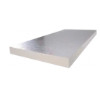 Polyisocyanurate (PIR) foam insulation is inherently not fire-resistant, as its primary function is to trap air, which does not contribute to fire safety. PIR foam insulation boards can attain different fire ratings, including Class 0 or Class 1, signifying their behaviour regarding flame spread, smoke generation, and fire resistance. To enhance the fire safety of PIR, manufacturers may incorporate additives during the production process.
Polyisocyanurate (PIR) foam insulation is inherently not fire-resistant, as its primary function is to trap air, which does not contribute to fire safety. PIR foam insulation boards can attain different fire ratings, including Class 0 or Class 1, signifying their behaviour regarding flame spread, smoke generation, and fire resistance. To enhance the fire safety of PIR, manufacturers may incorporate additives during the production process.
PHENOLIC FOAM INSULATION ‘C - F’ FIRE RATING
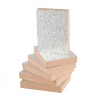 Phenolic Foam insulation is renowned for its outstanding fire resistance.It achieves European Fire Classification Euroclass C-s2,d0 when classified to EN 13501-1. Nevertheless, depending on the application, it is more frequently categorised within Group F.
Phenolic Foam insulation is renowned for its outstanding fire resistance.It achieves European Fire Classification Euroclass C-s2,d0 when classified to EN 13501-1. Nevertheless, depending on the application, it is more frequently categorised within Group F.
POLYSTYRENE INSULATION ‘E - F’ FIRE RATING
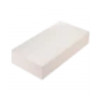 Polystyrene Foam: Conventional polystyrene foam insulation does not possess inherent fire-resistant qualities. Both EPS and XPS variants of polystyrene foam insulation are flammable materials that can catch fire when subjected to open flames or elevated temperatures. These materials are petroleum-based and comprise combustible components.
Polystyrene Foam: Conventional polystyrene foam insulation does not possess inherent fire-resistant qualities. Both EPS and XPS variants of polystyrene foam insulation are flammable materials that can catch fire when subjected to open flames or elevated temperatures. These materials are petroleum-based and comprise combustible components.
CONCLUSION
In this article, we've discussed different classifications of fire-rated insulation, including the Euroclass assessment, which evaluates materials' behaviour during a fire in terms of flame spread, smoke production, and other properties.
When it comes to fire-rated insulation, products with an A1 rating stand out as the best choice. These materials are classified as non-combustible, meaning they do not contribute to the spread of a fire. A1-rated insulation offers the highest level of fire resistance, making it an optimal choice for enhancing fire safety in various construction projects.
Always consult with experts and adhere to local regulations to make informed decisions when it comes to fire-rated insulation.
Related articles:
THE ULTIMATE GUIDE TO 30-60-90-240 MINUTE A1 FIRE RATED BOARDS: BENEFITS AND APPLICATIONS
7 EASY TIPS FOR INSTALLING FOIL FACED INSULATION THE RIGHT WAY
DEMYSTIFYING FIRE RATINGS FOR INSULATION MATERIALS
*All the information provided in the content published on Insulationgo blog is for informational and educational purposes only. Insulationgo LTD makes every effort to ensure the accuracy and timeliness of the content, but we do not assume any responsibility for any errors or omissions.
The information presented on this blog should not be considered as professional advice or a substitute for consulting relevant experts. Before making any purchase decisions or taking action based on the information presented here, it is strongly recommended to contact the product manufacturer directly to verify the details and ensure its suitability for your specific needs.
Any descriptions, drawings, photographs, data, proportions, weights, measured values etc. given herein may change without prior notice and do not constitute the agreed contractual quality of the products. It is the responsibility of the recipient of all products to ensure that any proprietary rights and existing laws and legislation are observed.
By using this blog, you acknowledge and agree that Insulationgo LTD shall not be held liable for any damages, losses, or inconveniences arising from the use or reliance on the information provided herein. This limitation of liability applies to all users of the blog, including but not limited to visitors, readers, and subscribers.










































































































